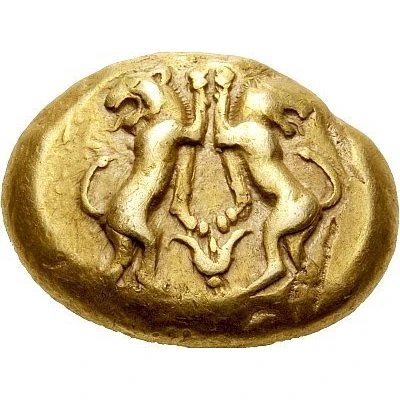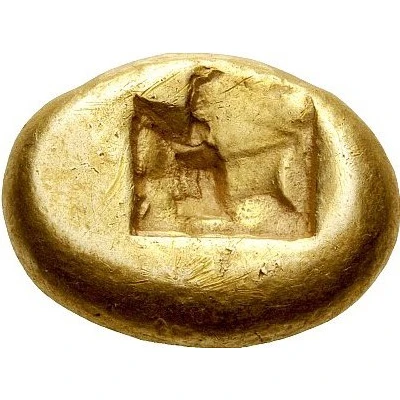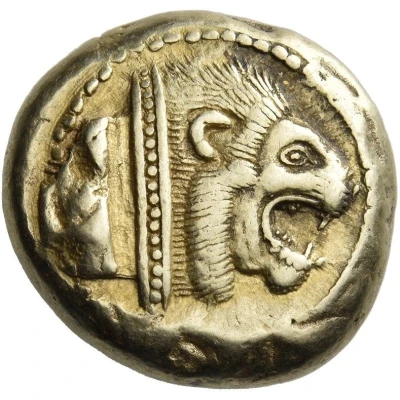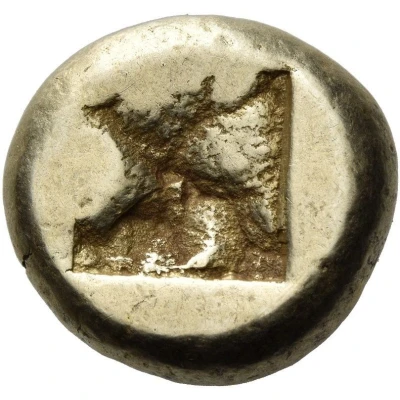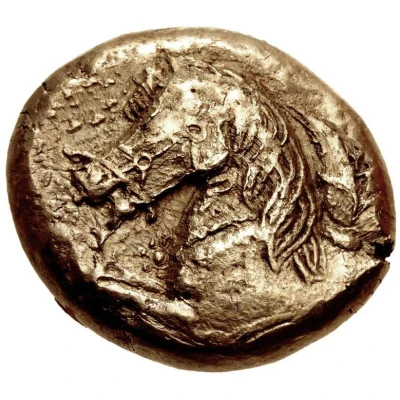
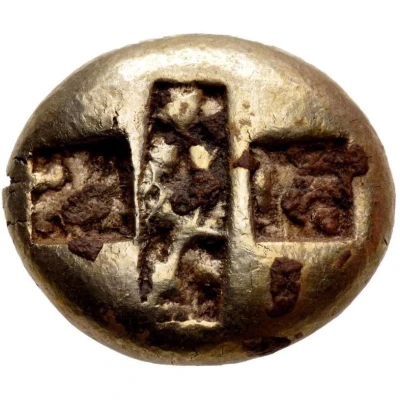

© Classical Numismatic Group, Inc.
Stater 550 BC - 525 BC
| Electrum | 14.24 g | 19 mm |
| Issuer | Uncertain Ionian city |
|---|---|
| Type | Standard circulation coin |
| Years | 550 BC - 525 BC |
| Value | Stater (1) |
| Currency | Electrum Stater |
| Composition | Electrum |
| Weight | 14.24 g |
| Diameter | 19 mm |
| Shape | Round (irregular) |
| Technique | Hammered, Incuse |
| Demonetized | Yes |
| Updated | 2024-10-10 |
| Numista | N#431624 |
|---|---|
| Rarity index | 100% |
Reverse
Two incuse squares flanking central rectangular incuse.
Comment
Fischer-Bossert, Horses, Series I, 2; Konuk & Lorber fig. 7; Le Rider, Naissance, pl. III, 7; Traité pl. II, 24.
Interesting fact
The Electrum Stater coin from an Uncertain Ionian city (550 BC - 525 BC) is considered a rare and valuable artifact, with only a few examples known to exist in the world. One of the most fascinating aspects of this coin is its unique blend of metals. Electrum is a naturally occurring alloy of gold and silver, and the coin's composition is roughly 55% gold and 45% silver. This blend gives the coin a distinctive yellow-white color that sets it apart from other coins of the time, which were typically made of pure gold or silver. The use of Electrum in coinage was a deliberate choice by the ancient Ionians, as it was prized for its durability and resistance to wear and tear. Despite its rarity, the Electrum Stater remains a popular collector's item among numismatists and historians, offering a glimpse into the economic and cultural practices of ancient Ionia.
